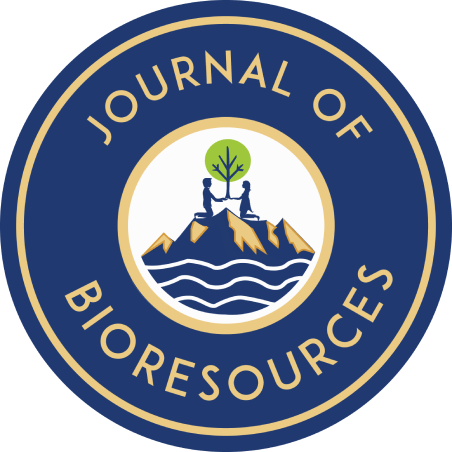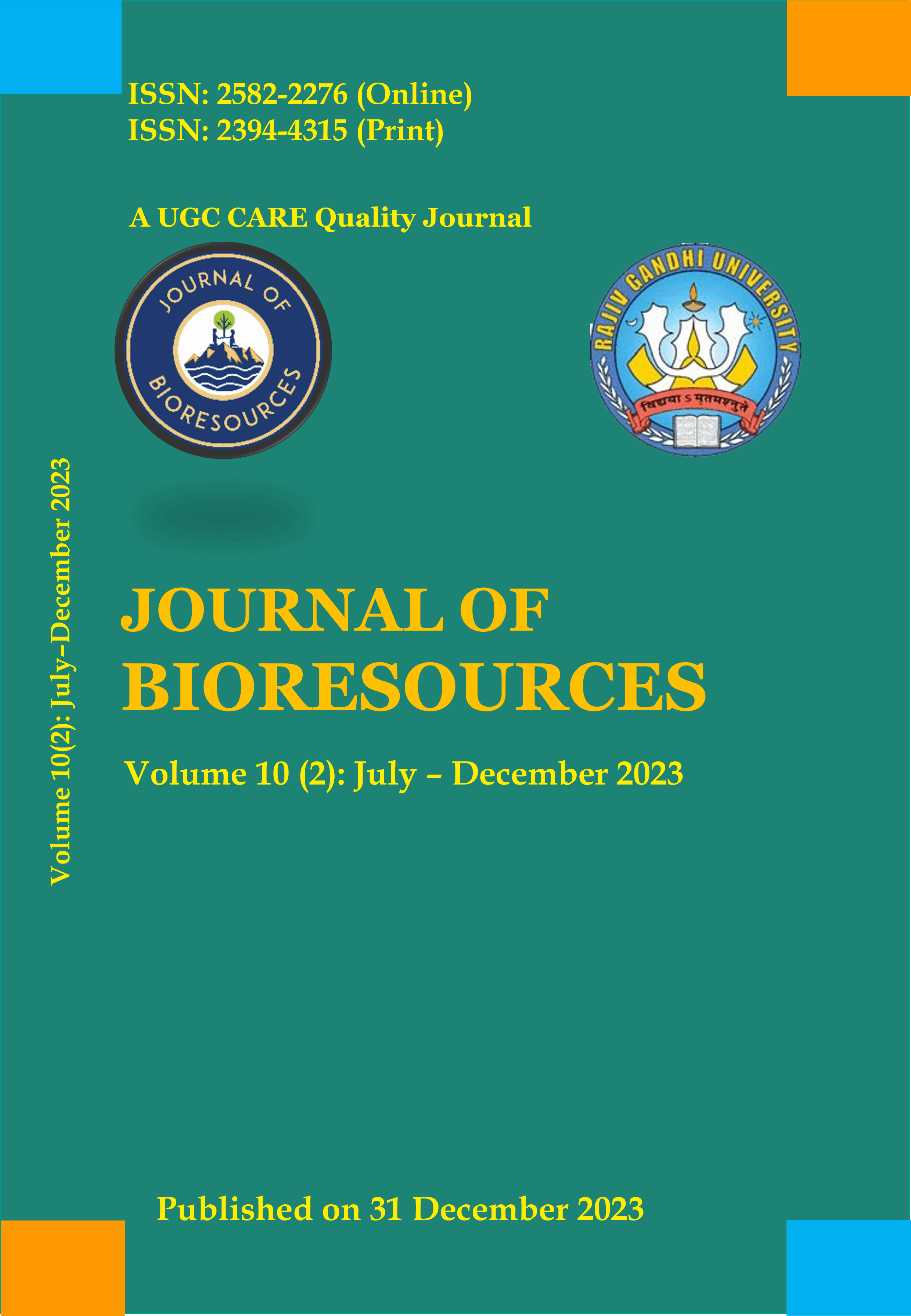Article Preview

Journal of Bioresources
Volume: 11 (2) : July-December 2024

Photoresponsive silver nanowire nanoplatform for real-time drug delivery in non-small cell lung cancer therapy
Abstract
In this study, we first successfully synthesized three different sizes and shapes of Ag nanowires (Ag NWs) using a polyol synthesis method. The size and morphology of the Ag NWs were controlled by the types of inorganic control agents in the reaction system (NaCl for 1, CuCl2 for 2, and FeCl3 for 3). The synthesized Ag NWs were characterized using scanning electron microscopy (SEM) and powder X-ray diffraction (PXRD) experiments. Subsequently, due to the favorable width of 1, we utilized it as an effective photosensitizer to construct a novel drug-loaded nanomaterial platform, namely 1-PLC@DOX (PLC stands for poly(ε-caprolactone), and DOX stands for Doxorubicin), to achieve on-demand drug release triggered by near-infrared (NIR) laser. The results indicate that the drug delivery system can achieve minimally invasive treatment of complex geometric defects. Under near-infrared irradiation, 1-PLC@DOX can heat up to 53.6 °C within 15 min, showing a unique heating platform on the heating curve, with ideal photothermal stability and heating effect compared to other groups. By toggling near-infrared irradiation on or off, 1-PLC@DOX can exhibit a stair-step drug release curve, suggesting that on-demand control of drug release using near-infrared laser as a trigger is feasible. In vitro biological evaluations demonstrate that 1-PLC@DOX exhibits good biocompatibility and anti-tumor ability, significantly reducing the invasive ability of A549 cells on non-small cell lung cancer (NSCLC) cells, and at the same time inhibiting the proliferation of cancer cells by regulating the p53 signaling pathway to cause apoptosis.
Introduction
Lung cancer can be classified into non-small cell lung cancer (NSCLC) and small cell lung cancer (SCC) based on the microscopic observation of the pathologic tissue [1]. NSCLC which accounts for 85 % of the most common cases, is the most important type of lesion causing lung cancer morbidity and mortality [2]. In recent years, significant progress has been made in combined therapy based on nanotechnology, integrating drugs, targeting molecules, and polymers into nanoplatforms, offering a potential solution [3]. Among them, chemotherapy-photothermal therapy has attracted considerable attention for its ability to enhance tumor sensitivity to drugs and reduce side effects [4]. However, the design and manufacturing of nanoplatforms are crucial. Therefore, our research focuses on selecting safe and efficient functional components to manufacture a multifunctional chemical photothermal nanoplatform.
In recent years, non-invasive photothermal therapy (PTT) has garnered widespread attention as a novel adjunctive treatment modality [[5], [6], [7]]. PTT primarily utilizes photothermal agents to convert light energy into heat, disrupting the integrity of pathogenic microbes and inducing cellular apoptosis [8]. This approach not only effectively reduces bacterial resistance but also achieves high efficiency in a non-invasive manner [9,10]. The efficacy of photothermal antibacterial therapy is directly correlated with the performance of photosensitizers. Typically, most photosensitizers require temperatures above 50 °C to achieve high antibacterial rates. However, such temperatures may exceed the tolerance of human tissues, potentially causing damage to normal tissues and even delaying wound healing, making standalone PTT challenging to implement. Consequently, researchers have begun to explore combining PTT with other antibacterial treatment methods [[11], [12], [13]]. By employing PTT in conjunction with other therapies such as antibiotics or photodynamic therapy under relatively mild conditions, more effective antibacterial effects can be achieved across a broader spectrum, thereby presenting new possibilities for photothermal antibacterial therapy.
In recent years, silver nanoparticles have garnered significant attention due to their outstanding performance, particularly in the field of biomedicine [[14], [15], [16], [17]]. Silver nanowires, characterized by their nano-scale lateral dimensions and unrestricted one-dimensional structure, exhibit exceptional antimicrobial properties and find applications in the fabrication of antimicrobial agents, disinfectants, and medical devices for infection prevention [18]. Furthermore, silver nanowires efficiently bind with biomolecules, enabling the development of highly sensitive and selective biosensors for disease diagnosis and monitoring [19]. Serving as drug carriers, they facilitate the efficient delivery of therapeutics to target tissues or cells, enhancing treatment efficacy while minimizing side effects. In photothermal therapy, silver nanowires effectively absorb light energy and convert it into heat, enabling localized heating to eradicate tumor cells, thus holding promise for cancer treatment [[20], [21], [22], [23], [24], [25]]. Overall, silver nanowires demonstrate immense potential in various biomedical applications, including antimicrobial activity, drug delivery, biosensing, and cancer therapy [[26], [27], [28]]. Their unique advantages, such as nano-scale lateral dimensions and unrestricted one-dimensional structure, make them particularly promising in the field of photothermal therapy [29]. The liquid-phase reduction method, including methods such as seed-mediated growth and polyol reduction, is a primary approach for synthesizing silver nanowires [30]. Compared to other nanomaterials, silver nanowires exhibit higher surface area-to-volume ratio and superior thermal conductivity, contributing to their unique advantages in photothermal therapy.
Therefore, based on the above discussion, this study employed a polyol process at 150 °C, using Ag(NO3)3 as the silver source, ethylene glycol (EG) as the solvent and reducing agent, NaCl, CuCl2, and FeCl3 as control agents, and polyvinylpyrrolidone (PVP) as the surfactant, to successfully synthesize three different structures of novel Ag NWs (1–3). Subsequently, detailed characterization of these structures was conducted through SEM and PXRD experiments. Building upon this, we selected 1 and loaded drug Doxorubicin (DOX) onto its surface using physical adsorption, followed by encapsulation with poly(ε-caprolactone) (PLC), resulting in the synthesis of 1-PLC@DOX with inherent near-infrared photothermal properties. Finally, drug activity was tested using an in vitro cancer cell model, demonstrating its effective inhibition of cancer cell proliferation. This study provides a novel nanomaterial platform for cancer therapy.
Section Snippets
Materials and instrumentation
All of the solvents and agents are purchased and directly used without further purification. The morphologies of Ag NWs are measured by using a Hitachi S-4800 emission scanning electron microscope (SEM). The powder X-ray diffraction (PXRD) was conducted on a Bruker D8 ADVANCE X-ray powder diffractometer equipped with a Cu Kα radiation (λ = 0.15418 Å).
Preparation of the Ag NWs-1
The synthetic procedures are as follows: first, prepare solution I: 1 g PVP (Mw = 1 300 000) and 0.5 g AgNO3 was dissolved in the 100 mL EG,
SEM and PXRD discussions for the as-synthesized Ag NWs 1–3
The structures of three as-synthesized samples Ag NWs 1–3 are characterized by the SEM experiments. As shown in Fig. 1, the SEM images shows that the as-synthesized silver nanowires samples are single pure phase disperse with different size. The SEM measurements show that the Ag NWs-1 with 90 nm in diameter and 10–50 μm in lengths (Fig. 1a and b), Ag NWs-2 with about 70 nm in diameter (Fig. 1c and d) and 20–60 μm in length, Ag NWS-3 has a diameter of approximately 55 nm and lengths of 60–100 μm
Conclusion
In summary, we successfully synthesized three different structures of Ag NWs using a polyol process. While the influence of inorganic control agents on the final structure and size of Ag nanoparticles has been explored, the detailed synthetic mechanism remains under investigation. All samples were characterized by SEM and PXRD. SEM measurements revealed that Ag NWs-1 had a diameter of 90 nm and a length of 10–50 μm, Ag NWs-2 had a diameter of approximately 70 nm and a length of about 20–60 μm.
Ethical approval
Not applicable.
Funding
Not applicable.
Availability of data and materials
The article contains the data that were utilized to support the results of this investigation.
Declaration of competing interest
The author(s) herein state that they have no competing interests with respect to the publishing of this work.
References
T. Wang et al.
miR-21 regulates skin wound healing by targeting multiple aspects of the healing process
S. Feng et al.
L. Qin et al.
S. Feng et al.
Q. Zhao et al.
